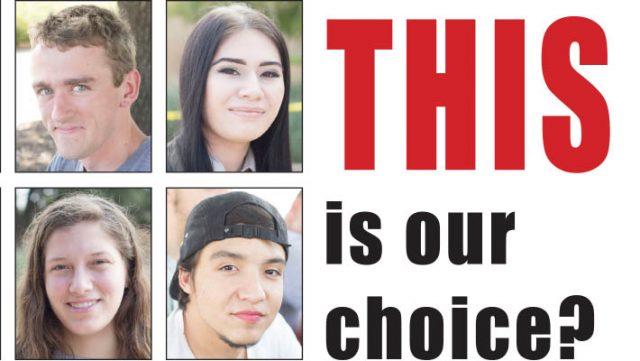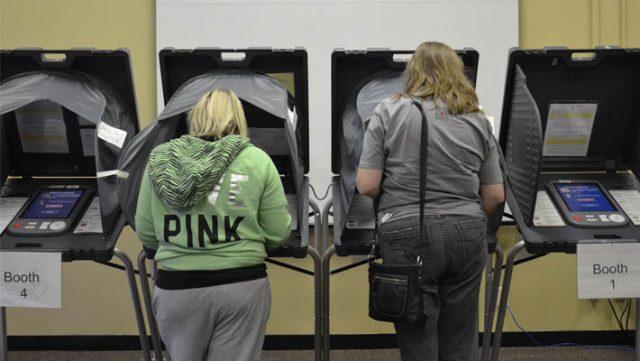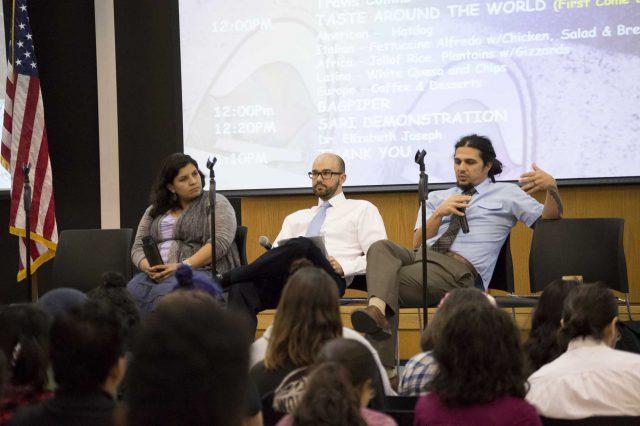By Jason Middlebrooks/ reporter
Global warming. It is real. It is our fault, and scientists agree, a Dallas Baptist University science professor said Oct. 11.
In The Science of Climate Change, John McCuin taught the South Campus audience of over 100 students and faculty how to correctly answer the question “Is climate changing?”
“My goal in this talk is that I hope that you leave with an understanding,” he said.
McCuin explained how, why, “so what” and what people can do regarding climate change. He started with the misconception most people have between weather and climate. Climate is the statistical data of average weather, usually over 30 years, while weather is what is taking place at a particular moment in time, ranging up to two weeks, Phillips said.
Using climate data dating back to the 1800s, McCuin used a time lapse animation of a world map that shows the audience how the world climate has been changing, warming up over time. The world temperature began to rise significantly after the 1970s. Despite this evidence, people still believe global warming is a non-issue.
“You might hear someone say, ‘Oh! The climate stopped warming 10 years ago,’ or something,” he said. “Maybe they cherry-picked some short set of data, maybe between 2001-2011, saying, ‘Look, it’s not warming anymore.’”
McCuin said the data step continues. The climate is still warming with 2015 as the warmest year on record. McCuin presented survival of animal species, early blossoming of plant life, stronger storms and larger flooding events as signs of global warming. He said more water is evaporated in a warmer climate, creating more precipitation.
“We are seeing over 26,500 indicators of physical, natural things happening that indicates that the planet is warming,” he said. “It’s not just thermometers. So far, 2016 is on a record-breaking trajectory.”
The yearly average temperature has been record-breaking 15 out of the last 16 years. During this period, Arctic ice has been melting 30 to 60 days earlier, record droughts have taken place in Australia along with roads buckling under heat stress around the world. According to trends from ancient climate data, McCuin said the world temperature should be trending toward an ice age. But people question why temperatures are going upward. Oddly enough, he said, the sun cannot be blamed for these events. Solar activity has been decreasing since the ’70s.
“We’ve made a big impact on the planet. This process is called the Industrial Revolution,” he said. “We have figured out how to take energy resources in the form of coal, oil and natural gas, pulled them out of the ground and burned them to get useful things out of them.”
Today, people are living through the side effects of the Industrial Revolution. The carbon monoxide with the greenhouse effect of the atmosphere is preventing heat from escaping the earth. McCuin said 97 percent of scientists agree that global warming was created by man. The continuation of fossil fuel use will further damage the earth. If nothing changes, McCuin said Texas could see about 105 days of extreme heat.
“We have three choices: mitigation, adaptation and suffering,” he said. “We’re gonna do a mix of these. We are already experiencing some suffering. How much more are we going to experience, mitigate and adapt?”
The U.S. needs a clean energy solution, and those solutions are getting cheaper, McCuin said. Georgetown, Texas, has resorted to wind power, which was a cheaper option for the city.
“Wind power in Texas provides 10 percent of its electricity, powers 3.6 million homes, 17,000 jobs and $26 billion in capital investments,” he said. “It’s like taking 5.3 million cars off the road. It can supply 18 times the current electricity needs.”
Wind power accounted for 41 percent for utility use in 2015, McCuin said. Solar energy has a “bright future,” and it has accounted for 23 percent of utility use in 2014. For individuals, McCuin suggested using a carbon footprint calculator to see where improvements could be made. People could also save energy at home by switching over to LED lighting, conserving water, recycling and telling their representatives that they care about the environment.
“Our climate is changing. We see warmer temperatures, shifting rain patterns — all these different phenomenological things happening,” he said. “If we don’t factor all these in, we will get the outcomes scientists have projected. We know it’s coming. The question is, when is it going to happen?”



























